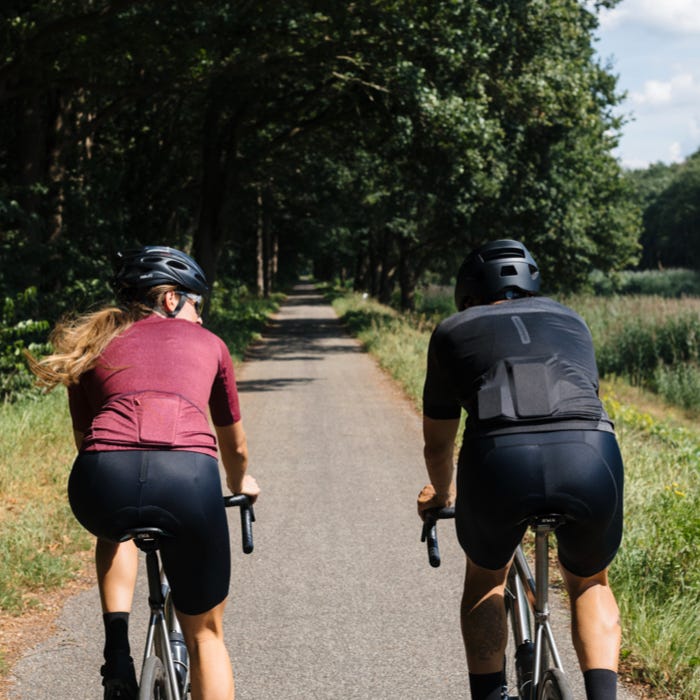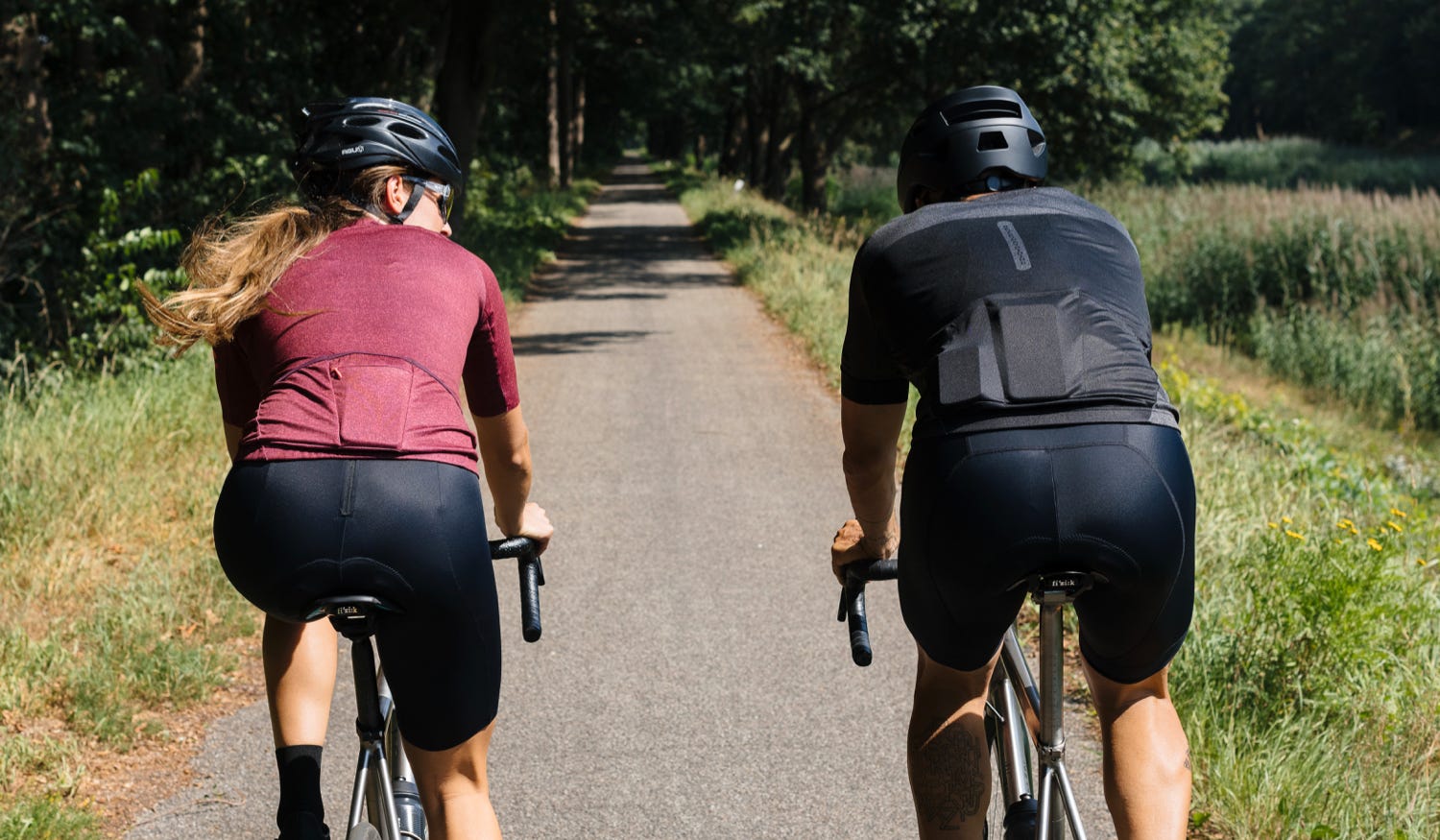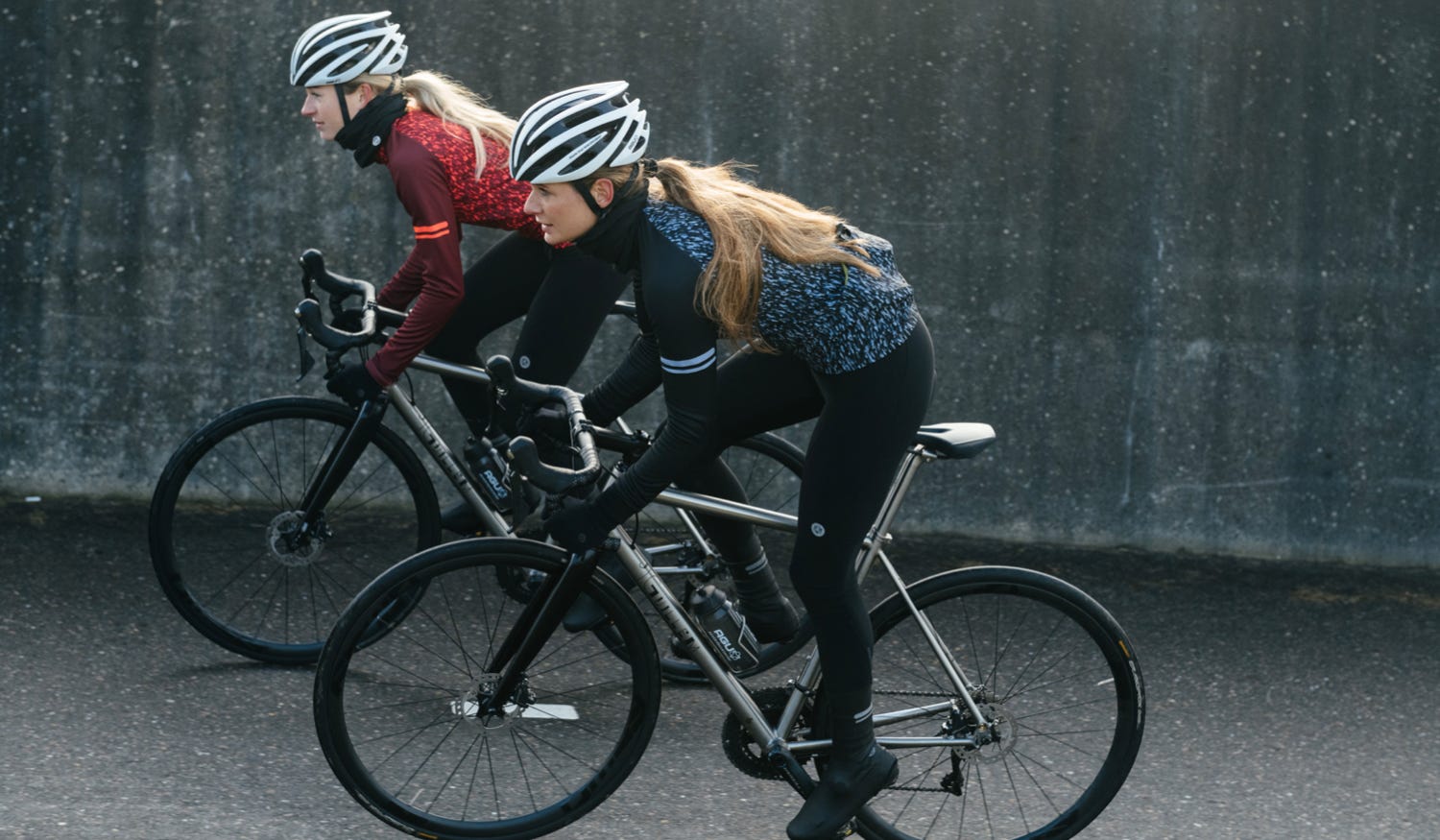

5 practical tips to prevent saddle soreness
Sooner or later every cyclist has to deal with saddle soreness or saddle pain. Whether it's numbness or seat discomfort, saddle pain can turn a pleasant ride into a ride from hell. With our five practical tips, you can prevent a lot of misery.
What causes saddle soreness
Before we dive into the tips, we’ll briefly explain the origins of saddle soreness. According to Dutch sports doctors Edwin Achterberg and Guido Vroemen, there are two types of saddle pain: on the one hand, you have numbness of the genitals, on the other hand, you have seat discomfort. Numbness is caused by pressure on the perineum. Seat discomfort is often caused by small wounds to the skin. These can be caused, for example, by friction on a bad road surface, worn or ill-fitting cycling shorts, or an incorrect saddle position. Once you know the cause, you can prevent saddle soreness in the future.
Hoe voorkom ik zadelpijn?
1: Change your cycling position
Because pressure on your perineum is the cause of numbness, it is important to relieve that pressure. This can be easily done by changing your cycling position every now and then. Perhaps you already do this by default, but make sure your regularly alternate a low grip in the handlebars with a somewhat straighter seated position.
2: Bike seats against saddle sores
Still suffering from numbness? Check if your saddle has the right width. If it is not wide enough, your sit bones will not absorb the pressure while cycling. If your saddle is too wide, you may suffer from groin pain. For men, the average distance between the sit bones is between 6 and 16 cm. For women, it is between 9 and 16 cm. Every buttock is different, so there is only one way to find out.
Measuring sit bones:
1. Imitate a cycling movement by sitting hunched over on a piece of cardboard;
2. Now stand up. The impressions you see are those of your sit bones;
3. Measure the distance between these impressions. This is the minimum width of your future bike saddle.
Many riders think that a bike seat with a cut out in the middle automatically prevents saddle sores. Let's put an end to that myth once and for all. In some cases, the edge actually presses more on the blood vessels and nerves. A bike saddle that does help to prevent numbness is a noseless, or short nose, bike seat. This type of seat is a solution because the blood flow to the genitals remains intact. A saddle like this, takes some getting used to because you have to rediscover your balance on the bike.
There is a lot of choice in bike seats. Which one fits your buttocks best is a matter of trial and error. Found your perfect saddle? Then make sure you adjust the saddle position properly. The right height, position and angle of your bike saddle are the finishing touches.
3: The perfect cycling shorts
Talking about pain. There's nothing more annoying than cycling with wounds or abrasions on or near your bottom. Fitting cycling shorts help prevent injuries. Always make sure you have the right size and check if the padding is of top quality. A high-quality bib, wicks away moisture and prevents chafing. In our chamois overview you can see which padding suits your riding style. The choice of chamois is very personal. Even within Team Visma | Lease a Bike riders have different preferences. One half prefers a red 120 chamois, whereas the other half prefers the black 320 version.
Maintaining your cycling shorts is actually just as important as buying them. Cycling in fresh trousers is not only more hygienic, it also helps to prevent irritation on your behind. And we probably don't need to tell you, but don't wear underwear underneath your cycling shorts! Just ‘ride commando’. Saves you from chafing and irritation.
4: Chamois cream or bib powder
To prevent saddle sores, many cyclists use Chamois Cream. Chawhat? Chamois cream is a special cream developed to reduce friction between the seat and the chamois. This prevents chafing and irritation and as a result, prevents saddle sore. The cream most often contains antibacterial substances that prevent infections.
There is even a difference between cream for men and cream for women. Whereas the men's cream has a more cooling effect to prevent tingling, the women's cream is often more delicate. The ladies' cream also has a healthy PH balance which can prevent urinary tract infections.
Before you start your ride, apply the cream generously to the areas adjacent to your chamois. It is not necessary to rub it in completely, because you’ll automatically do that while cycling. For double protection you can apply an extra layer to the chamois. That make a long ride in wet conditions more comfortable.
In addition to the good old cream, you can also buy bib powders these days. This powder has the same effect but keeps your chamois and skin dry. You can apply the powder to the trousers and simply rub it out.


5: Build up slowly and then keep on training
Most saddle sores occur during long rides. However, it takes time for your body to get used to long distances. Especially as a beginner. Therefore, get on your bike more often and build up your resistance by slowly increasing the length of your bike rides. The more you cycle, the more you enjoy the ride.


Let's Ride
The search for the cause of saddle pain can take some time. Is the bike properly adjusted? Do your trousers fit perfectly? Have you trained enough? Get out on your bike and rule out a cause by addressing a possible cause each time. In any case, do not be discouraged by saddle sores. Take your time. Enjoy the ride.




















